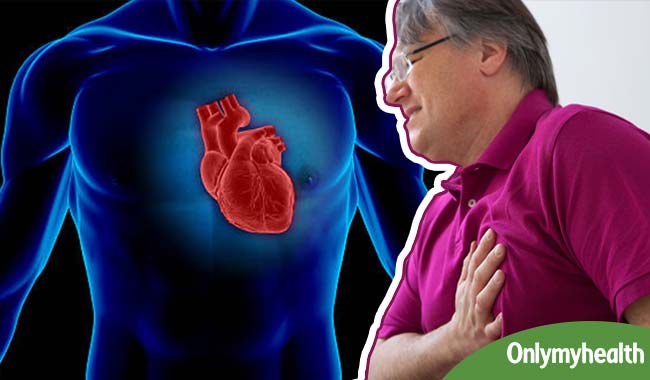
Underlying Causes
Angina usually is a symptom of coronary heart disease (CHD). CHD reduces blood flow to an area of heart muscle, which causes angina pain. This means that the underlying causes of angina generally are the same as the underlying causes of CHD.
Research suggests that CHD starts when certain factors damage the inner layers of the coronary arteries. These factors include smoking, high levels of fat and cholesterol in the blood, high blood pressure, and a high level of sugar in the blood (due to insulin resistance or diabetes).

When damage occurs, your body starts a healing process. The healing may cause plaque to build up where the arteries are damaged. When plaque builds up in the arteries, the condition is called atherosclerosis (ath-er-o-skler-O-sis).
Plaque narrows or blocks the arteries, reducing blood flow to the heart muscle. Some plaque is hard and stable and causes the arteries to become narrow and stiff. This can greatly reduce blood flow to the heart and cause angina.
Other plaque is soft and more likely to rupture (break open) and cause blood clots. Blood clots can partly or totally block the coronary arteries and cause angina.
Immediate Causes
A number of things can trigger angina pain, depending on the type of angina you have.
Stable Angina
Physical exertion is the most common trigger of stable angina. Severely narrowed arteries may allow enough blood to reach the heart when the demand for oxygen is low, such as when you're sitting.
However, with physical exertion—like walking up a hill or climbing stairs—the heart works harder and needs more oxygen.
Other triggers of stable angina include:
- Emotional stress
- Exposure to very hot or cold temperatures
- Heavy meals
- Smoking
- Unstable Angina
Blood clots that partly or totally block an artery cause unstable angina. If plaque in an artery ruptures, blood clots may form. This creates a larger blockage. A clot may grow large enough to completely block the artery and cause a heart attack.
Blood clots may form, partly dissolve, and later form again. Angina can occur each time a clot blocks an artery.
Variant Angina

A spasm in a coronary artery causes variant angina. The spasm causes the walls of the artery to tighten and narrow. Blood flow to the heart slows or stops. Variant angina may occur in people who have CHD and in those who don’t.
Other factors that can cause the coronary arteries to spasm are:
- Exposure to cold
- Emotional stress
- Medicines that tighten or narrow blood vessels
- Smoking
- Cocaine use
Microvascular Angina
This type of angina may be a symptom of coronary microvascular disease (MVD). Coronary MVD is heart disease that affects the heart’s smallest coronary arteries.
Reduced blood flow in the small coronary arteries may cause microvascular angina. Reduced blood flow may be the result of plaque in the arteries, spasms in the arteries, or damaged or diseased artery walls.
Read more articles on Heart Health.
For more related articles, Download OnlymyHealth App.
How we keep this article up to date:
We work with experts and keep a close eye on the latest in health and wellness. Whenever there is a new research or helpful information, we update our articles with accurate and useful advice.
Current Version
